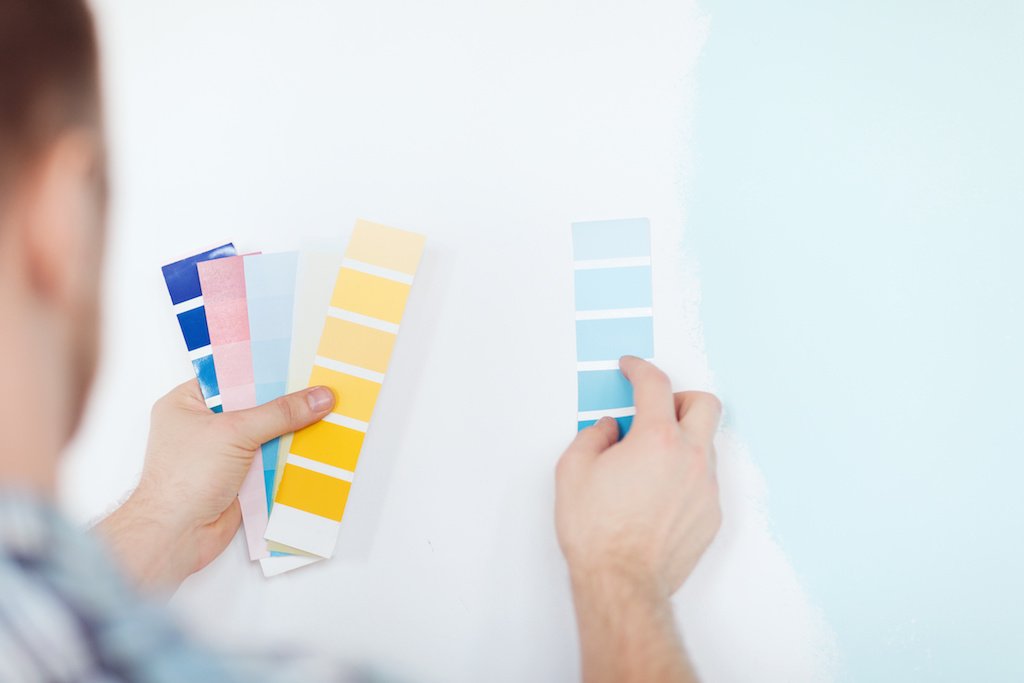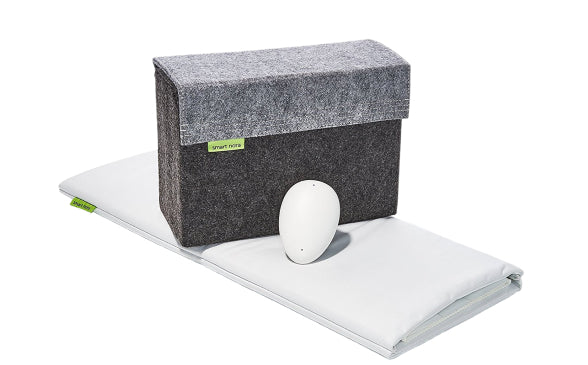
Categories
What Color Should I Paint My Room?

“What color should I paint my room?” you ask yourself, looking at an empty bedroom with garish walls as you mumble criticism of the previous tenant’s cavalier, absurd, or just plain boring color choices for the space that is now your home. There are endless options with a blank slate (and it’s so easy to create a blank slate with a couple of buckets of primer) that it can be overwhelming to know what bedroom colors will help you design a sleep environment worthy of your nightly slumber. How do you know what color(s) to choose? What bedroom color schemes will really tie the room together? What color should I paint my room?! Let’s take a scientific approach to find out!
Calm is King
You’ll want to cultivate a calming environment in the bedroom. There are really only two things you’re aiming for your bedroom to prodive — a place to sleep and a place to have sex (no snickering! *wink*). Sure, the bedroom houses all of your clothes and maybe a stack of unread books on the nightstand (try and keep things clean in your bedroom though), but you should try to have your bedroom be a specific place for (mainly) sleeping, so you don’t build up associations with your room space that’ll keep you up at night.
Your Room is NOT a Workplace

If you spend a lot of time in your bedroom hunched over a desk with a computer working through the afternoon, how can you expect to step back from your workload and say, “wow, this is a calming and nice place to relax?” Using the bedroom for stressful or heightened activities creates an environmental association with those places — and thus your bedroom becomes less about sleep than about activity, whether physical or mental.
That doesn’t mean that you can’t have bright or exhilarating colors or fun things in your bedroom, it just means that you should lean toward simplicity. Gear things toward sleepiness and relaxation. Use cool colors as your primary bedroom color tones — pastel, natural, and neutral tones. Leave the pops of color for your textural bedroom accessories, like pillows, art, rugs, and the like. There’s plenty of space to express yourself, it’ll just help you get a better night of sleep if your bedroom paint colors are calming and radiate the glow of relaxing energy.
Lady in the Streets, Color Theorist in the Sheets

Color theory is a fascinating (and informationally dense) subject. It’s the science and art of using color — how we perceive color, how colors mix, and what emotions we feel when we see combinations of colors. In 2011, a study in the Journal of the Academy of Marketing Science broke down the science behind how we process color and how color psychology is used in advertising and marketing — wait, you’re just wondering what color to paint your room, why does this all matter?
Color theory matters because colors have a tremendous impact on how we store and process memory and association.
Color has been used for therapeutic purposes for thousands of years, and it is truly effective. The red and yellow hues of a beaming McDonald’s spotted off the highway give you feelings of energy and attentiveness, respectively. See those colors splashed together in a familiar way? You’re more likely to pull off toward a big yellow sign reminding your brain of “happiness, optimism, and friendliness” than you are to head to the grocery store for a granola bar.
In the bedroom, you want basically the opposite of that excitement and intrigue (being excited is not conducive to falling asleep). You want a bedroom color scheme that promotes relaxation, quiet, calmness, and intimacy. Think of colors in nature that exemplify these qualities to you — leaves, rivers, the ocean, the sky at dusk, the forest floor, healthy soil, feathers. These are made up of primarily cool colors, and often promote peaceful and relaxing associations.
Try to pair bedroom paint colors with the moods that match. If you find water relaxing, lean toward a blue. If you’re more of a hiker, try green. Love gardening? Try an earth tone.
Start With the Centerpiece
But where to start with your bedroom’s new color story? Take stock of your focal point items and the color(s) they emphasize. This can be a rug that has streaks of blue and yellow running through it, a painting you’re planning on hanging up that’s mostly teal and red, a light pink bedspread you really love, or dark mahogany furniture… if you know what colors the things in your room will be, it’ll be easier to pick what color your bedroom walls should be painted to match. Bedroom color schemes can be vastly influenced by the objects in it.
5 Calming Bedroom Color Schemes
Off-White/Light Brown — Looking for something subtle with a touch of class without going overboard? Off-white won’t take away from the focal points in your bedroom and will help make the space feel bigger. Light browns can be reminiscent of the earth, calming and quiet.
Lavender — For something a little more refreshing (but still cool), lavender is great. The pastel-purple color reflects the sun setting over the mountains or rising past the Atlantic on a cool, pleasant morning. It’s calming!
Soft Grey — A bit more classically neutral than other options (but still a statement of modernity), soft grey colors can be soothing, as long as you steer clear of making your room feel like primer. A little blue goes a long way for a relaxing grey.
Sky Blue — Speaking of blue, sky blue colors, the reflection of rivers and streams, can create feelings of safety and security. Let yourself slow down by the creek while you drift off to sleep. It’s a color associated with creativity and calm.

Soft Green — Picture yourself in a hammock surrounded by leafy trees… pretty calming, right? What if you could encapsulate the color scheme of that feeling into a bedroom? Yeah, we thought so — it’s a great way to relax!
To Accent or Not to Accent?

Still wondering “what color should I paint my bedroom” with all these different options? Remember, you don’t have to paint every wall in your bedroom the same color! You can start with a non-glossy, soft, or off-white color and pick one wall to use as an accent wall. Get the best of both worlds and let a single wall carry the weight of your bedroom’s new relaxation-forward tone.
When you find yourself looking at those empty walls that are just begging for a makeover, don’t be afraid to try something new — show your color theory prowess (and willingness to try something new) with bedroom paint colors that are psychologically proven to help you get a better night of sleep, or at least get you in the mood for it. What color should I paint my room? The answer is simple — the right color for you, a combination of art and science.

